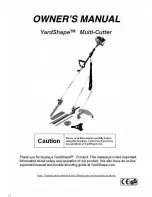
Chapter 6
HAZARDS, PRECAUTIONS AND LIMITATIONS OF USE
Thermo Fisher Scientific
MR23i
6-3
Stress Corrosion
This term relates to the phenomenom of accelerated corrosion due
to the effect of centrifugation when a corrosive chemical is in con-
tact with the alloy. From the time when the aluminium alloy has
been attacked by chemicals, stress corrosion begins to appear. As
it is on a microscopic scale it is even more dangerous than a
macroscopic scale since it is invisible.
During centrifugation, chemicals responsible for corrosion are also
submitted to the tremendous “g” force which pushes them against
the alloy. This close contact facilitates the chemical reaction which
occurs much faster than in a static situation. Moreover, centrifugal
force is very directional thus corrosion under stress creates, with a
very small amount of corrosive product, straight microscopic fissu-
res. Each centrifugation run makes the chemical migrate further
and further.
A fissure, although it is microscopic, is a cut in the metal, breaking
the cohesion of the material. As one weak link in a chain allows the
chain to break, so the microfissures break the chain of resistance
of the accessory to centrifugal force.
As accessories are designed with high levels of safety, rupture
does not occur as soon as the first microfissures are produced.
Depending upon the location of the fissure, disruption may occur
before it reaches the external surface of the accessory. The fissure
creates a weakness which makes the accessory less and less resi-
stant to mechanical fatigue.
The corrosion by a small amount of corrosive product does not dis-
rupt the accessory but makes it mechanically weaker and weaker
until it disrupts due to both centrifugal effort and number of cycles.
Because stress corrosion is largely invisible, it is essential that
rotors are scrutinised regularly paying particular attention to
susceptible parts such as the base of the pockets, the outer edges
and the base of the rotor. If fissures are suspected, it is forbidden to
use the rotor until it has been examined by a specialist.
CLEANING
Ideally, rotors should be washed after every use but at least weekly
in warm water containing a few drops of mild non alkaline detergent
(domestic washing up liquid is ideal) and EVERY TIME AFTER A
SPILLAGE HAS OCCURRED.
Do not forget to wash the core of the rotor which comes into con-
tact with the drive spindle.
Each pocket of the rotor must be washed thoroughly using a small
nylon brush.
DO NOT USE METAL WIRE BRUSHES.
Summary of Contents for 11174729
Page 1: ...P N 50116911 1 Analyze Detect Measure Control Instruction Manual MR 23i ...
Page 2: ......
Page 3: ...PN 50116911 1 Issued 06 08 Instruction Manual Jouan MR 23i ...
Page 4: ......
Page 14: ...Chapter 2 INSTALLATION PROCEDURE 2 6 MR23i Thermo Fisher Scientific ...
Page 26: ...Chapter 4 OPERATING PRINCIPALES 4 6 MR23i Thermo Fisher Scientific ...
Page 54: ...Chapter 6 HAZARDS PRECAUTIONS AND LIMITATIONS OF USE 6 18 MR23i Thermo Fisher Scientific ...
Page 58: ...Annex A GUARANTEE TERMS A 2 MR23i Thermo Fisher Scientific ...
Page 62: ...Annex B Declaration of conformity B 4 Heraeus Biofuge Primo R Thermo Fisher Scientific ...
Page 64: ...Index I 2 MR23i Thermo Fisher Scientific ...
Page 65: ......
















































